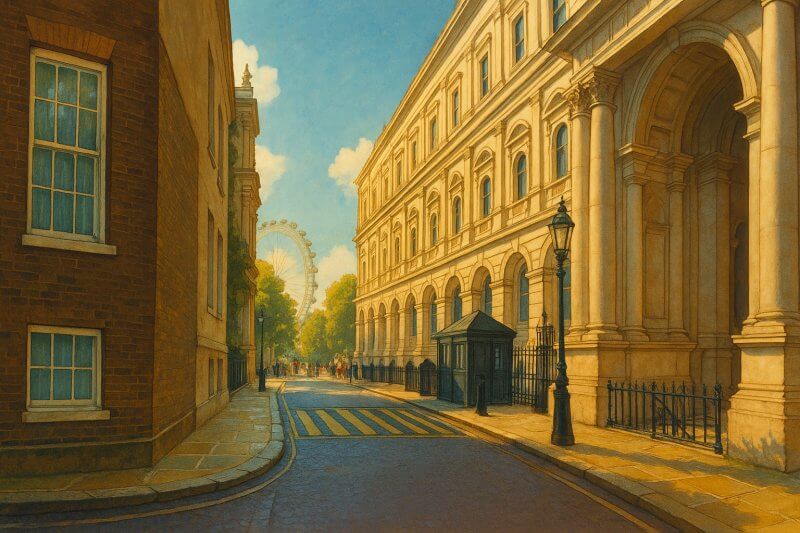
Downing Street: The Heart of British Political Power
Where is Downing Street?
Downing Street is located in the heart of Westminster, central London, just off Whitehall. This short but historically important street lies within walking distance of the Houses of Parliament, Westminster Abbey, and Parliament Square.It runs west to east from Whitehall and ends at Horse Guards Road, placing it directly within the UK's seat of political power. Its central location makes it a key stop for tourists exploring London's most iconic landmarks.
How Long is Downing Street?
Downing Street is a very short street by London standards. It measures only about 200 feet (60 metres) in length. Despite its modest size, it has played a disproportionately large role in British and global affairs for more than two centuries.History and Construction
Downing Street dates back to the late 17th century. It was constructed in the 1680s under the orders of Sir George Downing, a diplomat and civil servant in the court of Charles II.Sir George acquired land near St James’s Park and commissioned a series of townhouses to be built there. The original aim was to develop a row of fine homes for high-ranking government officials. The houses were built on land that was once part of the grounds of Whitehall Palace, which had been mostly destroyed by fire in 1698.
Map of Downing Street, London
How Did Downing Street Get Its Name?
The street is named after its developer, Sir George Downing (1623–1684). He was a somewhat controversial figure—an able administrator and diplomat, but also remembered for switching sides during the English Civil War and later betraying former allies.The name "Downing Street" first appeared in records in the 1680s, shortly after the street was built. It is not named after a place but rather directly after Sir George himself, reflecting his personal investment in the area’s development.
Roads Connected to Downing Street
Because of its short length, Downing Street connects with only a couple of streets:- Whitehall – This is the main street it connects with on its east end. Whitehall is a major thoroughfare running south from Trafalgar Square to Parliament Square.
- Horse Guards Road – On the western end, Downing Street terminates at this road which runs north-south along the eastern boundary of St James’s Park.
- K Quinn Street – On the northern end, Downing Street branches off to a short off shoot that was given its own name some years ago.
Major Buildings on Downing Street
Downing Street is most famous for the official residences and offices of senior members of the British government. The two most important buildings are:- 10 Downing Street – The official residence and executive office of the Prime Minister of the United Kingdom. It is located on the north side of the street.
- 11 Downing Street – The official residence of the Chancellor of the Exchequer, also on the north side. The building is adjacent to Number 10 and shares a connecting interior.
- The Cabinet Office – A major government department that supports the Prime Minister and Cabinet. It occupies much of the southern part of Downing Street and extends into the surrounding complex.

Painting of Downing Street (View full-size image here)
Nearest London Underground Stations
Several Tube stations are located within easy walking distance of Downing Street:- Westminster Station – Served by the Jubilee, District, and Circle lines. This is the closest station, located about 3 minutes' walk from the street.
- Charing Cross Station – Served by the Bakerloo and Northern lines, plus National Rail services. It’s about 7 minutes away on foot.
- Embankment Station – Also on the District, Circle, Bakerloo, and Northern lines, and located roughly 10 minutes' walk from Downing Street.
Fun Fact About Downing Street
One quirky fact: although 10 Downing Street is synonymous with the Prime Minister’s residence, it’s actually made up of three buildings combined into one!The iconic black door you see today fronts a complex that includes:
- The original house built by Sir George Downing
- An adjacent mansion at the back known as the "House at the Back" once used by the Earl of Grantham
- Modern office space added in recent centuries
Another point of interest: the "10" on the door of Number 10 is deliberately painted with a crooked "0", a subtle nod to tradition. The door itself is also not the original—it was replaced with a reinforced steel version following security concerns in the 1990s.